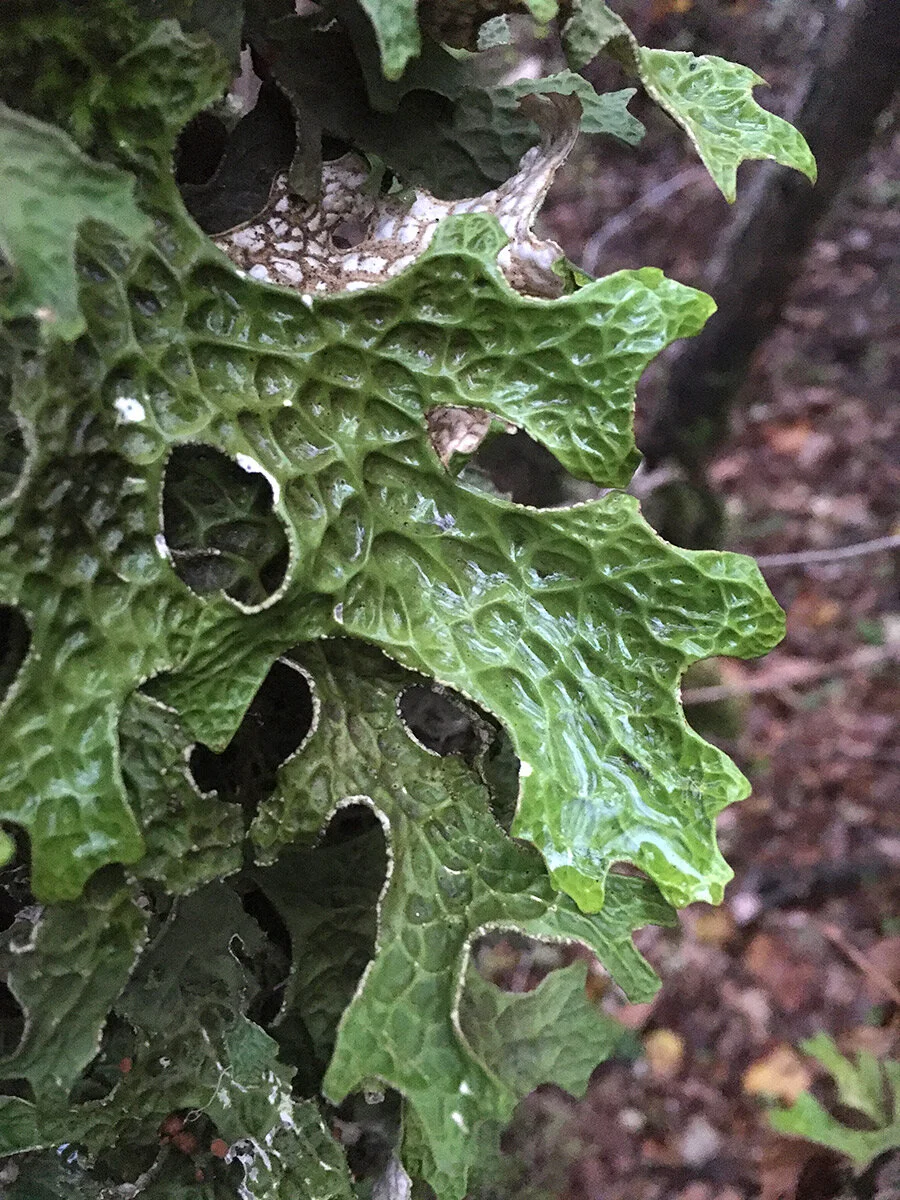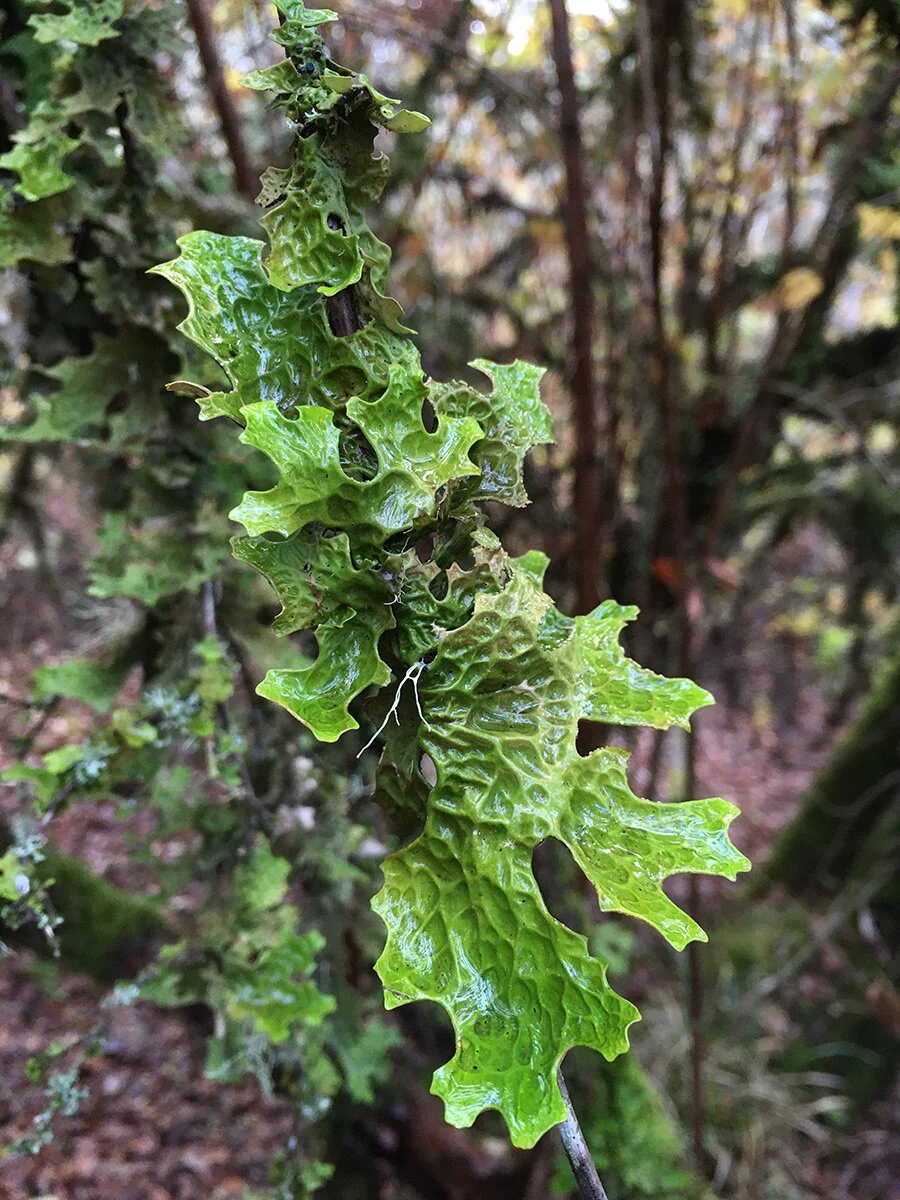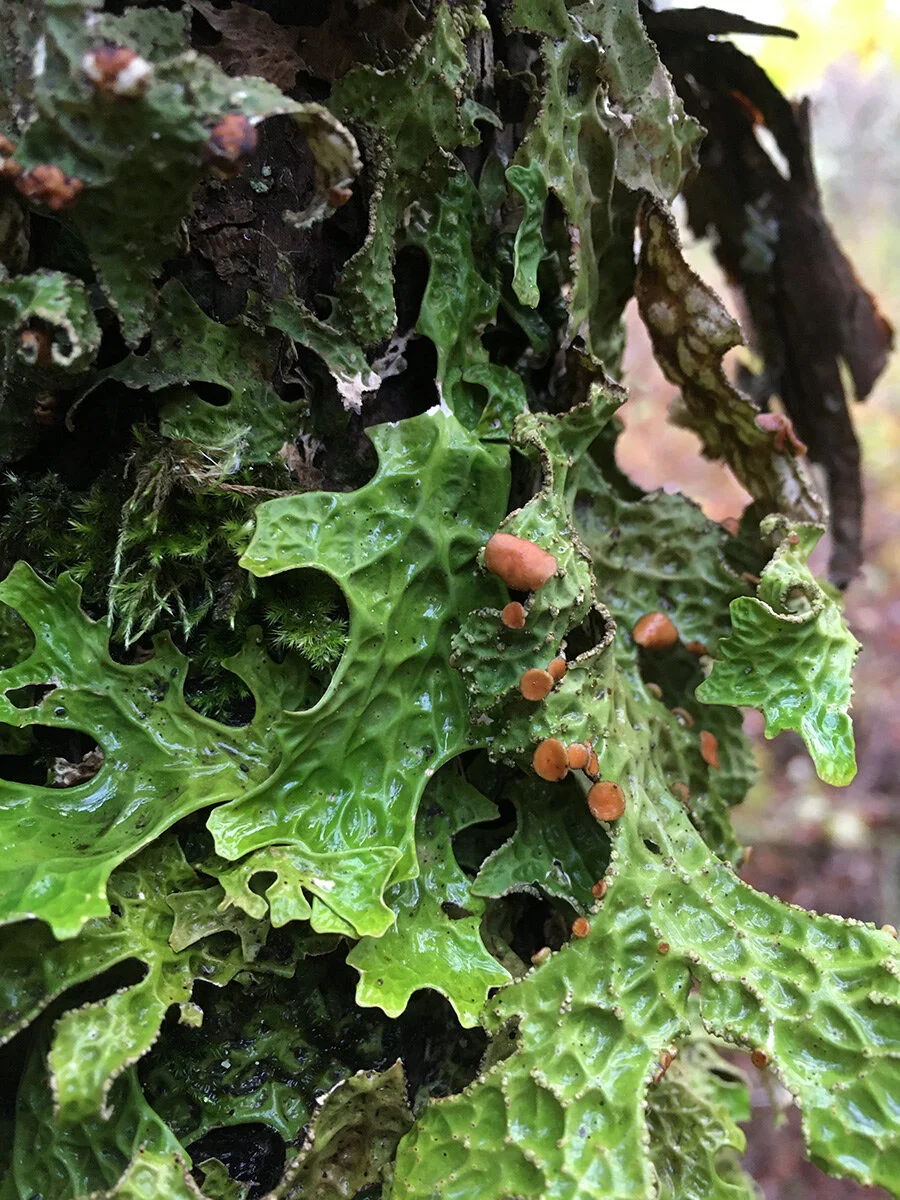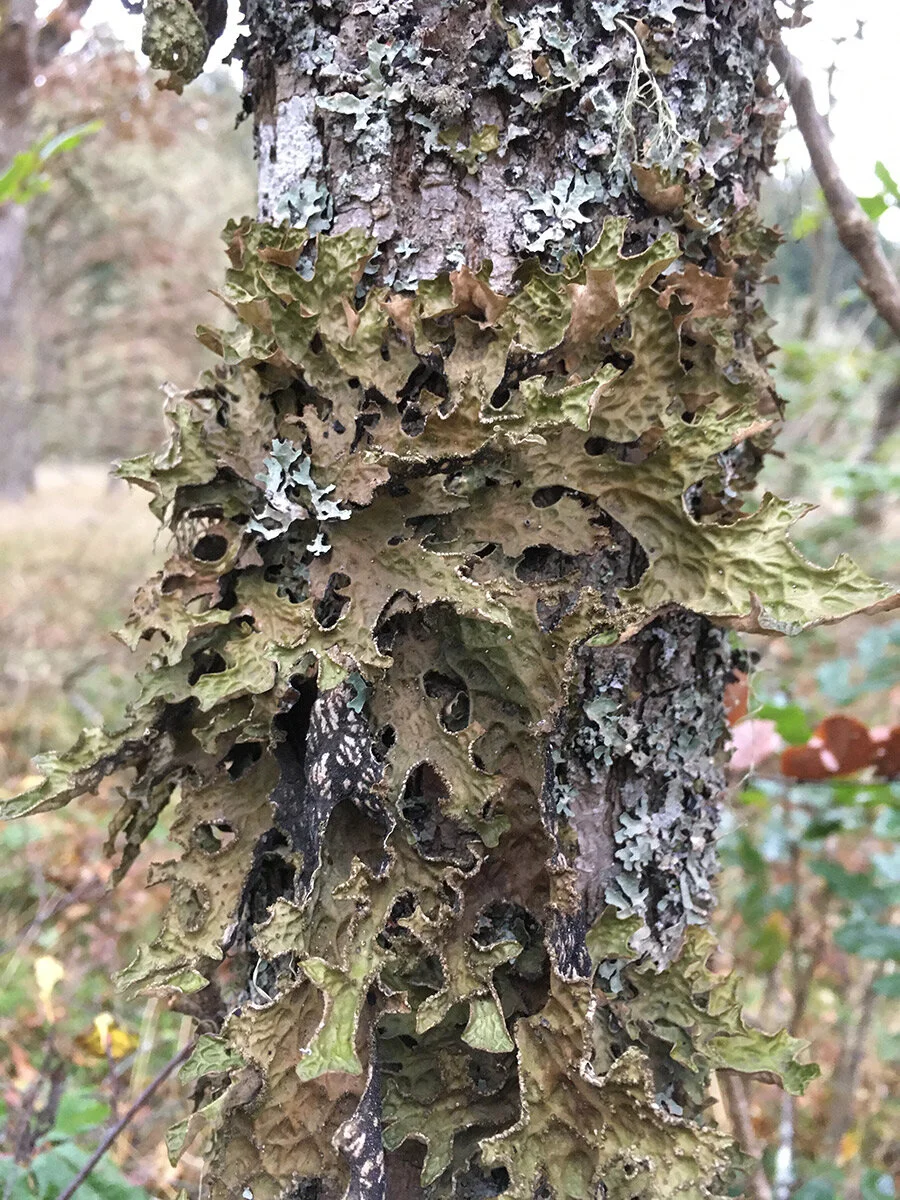The Latin name for snowberry is Symphoricarpos albus. Symphori- means “bear together,” and –carpos means fruits. Albus means white. You can see in the photos these snow-white berries growing in clusters. They are very eye-catching against the muted earth tones of grays and browns.
The bush is a thicket of little branches that provides cover for birds. Lately I have seen a spotted towhee scratching around in the underbrush, and occasionally it will hop up into the snowberry bush to get a berry. It is the only animal I have observed eating them this year.
































